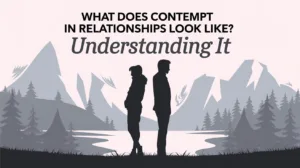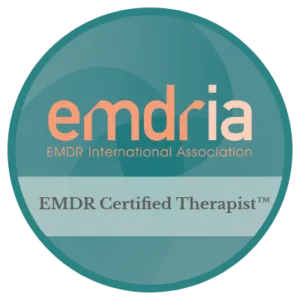Spend enough time scrolling TikTok, and eventually, you’re bound to come across someone dispensing mental health advice. It could be a qualified professional offering helpful (though generic) tips — or it could just as easily be someone with no qualifications at all.
The phenomenon of seeking support and advice from strangers online is so prevalent it has a name: social media therapy.
On the one hand, it’s understandable. Mental health care can be expensive and hard to find. Typing your symptoms into Google or TikTok yields instant results. The problem is, a lot of the advice is just wrong — and some of it is harmful.
“The good news is that therapy is becoming widely accepted, but as that happens, therapy terms are being misused on social media, and that can do more harm than good,” says Stephen Rodgers, LCSW, and owner of Denver Men’s Therapy. “Unless you’re a licensed psychotherapist or have an advanced degree, you shouldn’t be out there giving specific advice on diagnoses.”
As Rodgers points out, one of the primary problems with relying on Google or social media sites for mental health diagnoses is that certain “therapy speak,” or mental health buzzwords, tend to crop up with little to no context. The actual meanings of words like self-care and trauma, as well as actual disorders like ADHD or narcissistic personality disorder, can be misinterpreted, doing more harm than good.
We asked Rodgers to give us some expert insights into the world of therapy speak, tell us what’s going awry on social media (and what’s working), and offer a way forward for those seeking genuine, professional help.
All the Information, None of the Context
Social media isn’t inherently bad in life or the therapy world. In fact, “it can be a wonderful way to reach people,” Rodgers says. “One of our therapists, Jess [Proia], uses social media to reach men all over the world who may not have access to mental health information related to gay, bisexual or trans experiences. He provides deeply researched information for people who may not otherwise have that.”
Connectedness via the Internet has also gone a long way toward destigmatizing therapy and allowing patients in underserved or rural areas to access mental health services via teletherapy.
A recent study funded by the National Institute of Mental Health (NIMH) looked at 1,000 mental health TikTok videos and found that while the platform can be a valuable resource for mental health information and support, users need to proceed with caution.
The problem with social media therapy is that there are no clear guidelines about who is providing the information. When you search “#mentalhealth” on TikTok (like more than 60 billion others have in recent months), you see results based on popularity rather than accuracy.
The danger isn’t just in misinformation but in oversimplification of terms that are intrinsically complex. Hearing therapy terms or diagnoses taken out of context can mislead people about their own experiences and feelings. It can also lead to a delay in seeking professional help when needed.
“I think the best use of social media for therapy and mental health is finding resources,” says Proia. “Not using social media as the resource, but allowing it to be sort of a directory to resources, community, support, people who you can identify with in terms of your mental health presentation, diagnoses or external stressors.”
On his own Instagram channel, @holistic.homosexual, Proia emphasizes the importance of “finding connection and being able to heal through connection.”
He stresses the dichotomy of social media in that while it can promote isolation, if used intentionally, it can be a powerful tool for community building. Especially for those — such as gay, bisexual or trans men — who may not have access in their everyday lives to similar-minded people.
Proia has also observed that his DMs have become a safe space for men who may not feel comfortable openly engaging or following his platform. He’s currently working on a resource guide pointing to qualified LGBTQ+ therapists in response to the need he’s observed.
“There are a lot of awesome ways of connecting with people and supporting them in trying to find a voice to talk about [mental health issues] openly,” he says.
Unpacking Therapy Speak
How many of us have practiced “self-care” recently? What did it look like?
“Terms like ‘self-care’ get misunderstood as doing nice things for yourself,” Rodgers says. “It really should be things that fill you up in terms of getting you engaged, reducing stress and helping you to feel more connected, calm and curious about the world.”
Other commonly misunderstood therapy terms include:
- Triggered. Often this word is used colloquially to indicate being upset or annoyed by something. In reality, a trigger refers to something that evokes a traumatic memory or intense emotional reaction, especially in the context of PTSD.
- PTSD. Post-traumatic stress disorder is a severe mental health condition often linked to traumatic experiences. It’s more than just reliving painful memories; it involves intrusive thoughts, avoidance of reminders and heightened states of arousal. Casual use of the term often dilutes the severity and specificity of the condition.
- Boundaries. People will often put up boundaries that are, in actuality, demands of another person to behave in a certain way. In reality, a boundary is more about the boundary setter. “A boundary is a request to the other person,” Rodgers says. “The other person can choose to respect that or not.” When a boundary is not respected, the boundary setter should communicate a consequence clearly — such as cutting off communication or maintaining physical distance — and then stick to that.
- Conditions like ADHD, bipolar disorder, narcissistic personality disorder and OCD. All of these (and more) are very real mental health issues. But when you stop on a video that lists five signs of ADHD, it may resonate with certain aspects of your own experience. The problem is most of the information is incomplete at best and, at worst, flat-out wrong.
- Trauma. “Trauma” is often used as a stand-in for anything that happened to you that you didn’t like. In reality, trauma is your body and brain’s reaction to a particular event.
Getting your mental health information and — in some cases — diagnoses from unreliable or unvetted sources can lead you away from the actual health care you need. It can also lead you to believe you have a certain disorder or condition that you don’t. Some experts even suggest the misuse of therapy speak is making us lonely and self-centered.
“You can become distressed or distraught thinking you may have a certain condition or experienced childhood trauma,” Rodgers says. All the while, the information provided may not even be accurate — and it’s certainly not specific to you as an individual.
A Note About the Manosphere
In addition to more general social media therapy, there is a male-specific phenomenon that has grown alongside our increasing connectedness online. It’s called the manosphere, defined as a collection of websites, blogs and online forums promoting masculinity, online misogyny and strong opposition to feminism.
It’s an ideology that has caught fire online and, according to Rodgers, can take legitimate men’s issues and co-opt the language around them, giving them an insidious twist.
“I see this within men’s spaces,” Rodgers says. “The manosphere can take legitimate concerns about men’s issues, such as suicide or struggles with identity, and attribute the causes to feminists, LGBTQIA+ people, or basically anyone other than white men.”
Men who find themselves in the manosphere often discuss very real issues, like social anxiety, depression and suicidal ideation. The problem is, these discussions are happening within a skewed context that deflects responsibility and lays blame on anyone outside the manosphere bubble.
In response to the growing influence of the manosphere, therapists who work with men are actively seeking ways to counteract its potentially harmful narratives while meeting the deep-seated needs underneath — needs for connection, empathy and a sense of purpose.
Vetting Mental Health Advice Online
PlushCare evaluated 500 TikTok videos with mental health hashtags and found that only 9% of the influencers had actual mental health qualifications. That means 91% of the influencers offering mental health tips and advice are not qualified to do so.
Remember, personal experiences (while helpful) do not equal expertise. Just because someone has gone through a mental health challenge doesn’t make them an expert in treating it. And just because someone is a trained therapist does not mean they are your therapist and can diagnose you without ever having met you.
“Anyone who’s giving direct advice that is therapeutic … or anyone, especially a professional who is sharing diagnostic criteria, like how to diagnose someone is my biggest concern,” says Proia. “Our job as therapists is to do no harm and I see a lot of harm being done by doing that.”
When it comes to vetting sources:
- Check credentials. If a video resonates with you, dig a little deeper and check out the person’s background. Qualified professionals are likely to list their credentials and even a link to their professional bio.
- Be wary of broad generalizations. If someone claims a certain method or approach works for everyone, that’s a red flag. Therapy is highly individualized. What works for one person may not work for someone else.
- Get a second opinion. If a certain piece of advice or diagnosis resonates with your lived experience, go check it out with known reputable sources. The National Institute of Mental Health and the American Psychological Association are good places to start to test out the veracity of an online influencer’s claims.
- Trust your gut. If it seems too good to be true — you know the rest. It’s a cliche for a reason. Your intuition is powerful. Listen to it when something just feels off.
- Beware of confirmation bias. Confirmation bias is the tendency to favor and interpret information in a way that confirms our beliefs, values and experiences. It’s powerful and can lead to a skewed perception of your symptoms.
- Avoid self-diagnosis. Social media therapy does a great job of raising awareness of issues that have often been hard to discuss. If you relate to specific symptoms or experiences, it’s best to consult a professional before you make lifestyle changes or self-medicate with over-the-counter remedies.
- Reduce time online. Rodgers recommends limiting your social media usage. The research on social media’s negative effects on mental health is staggering. Rather than helping, it’s highly possible that scrolling is increasing anxiety and depression and negatively impacting your overall happiness and mental health.
While social media has destigmatized and opened up the world of mental health in many positive ways, it’s essential to approach any advice online with discernment. And always seek advice from a licensed professional who can provide diagnoses and a treatment plan tailored to your individual needs.













